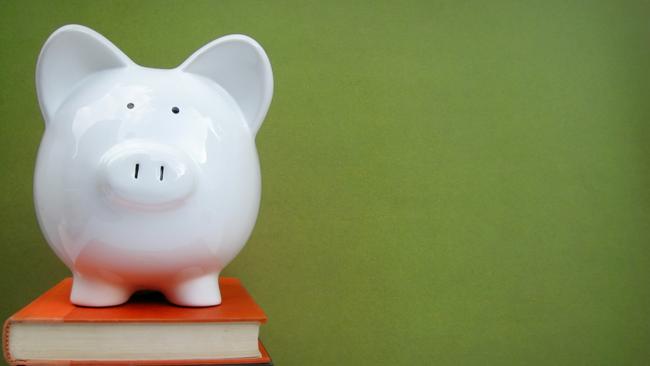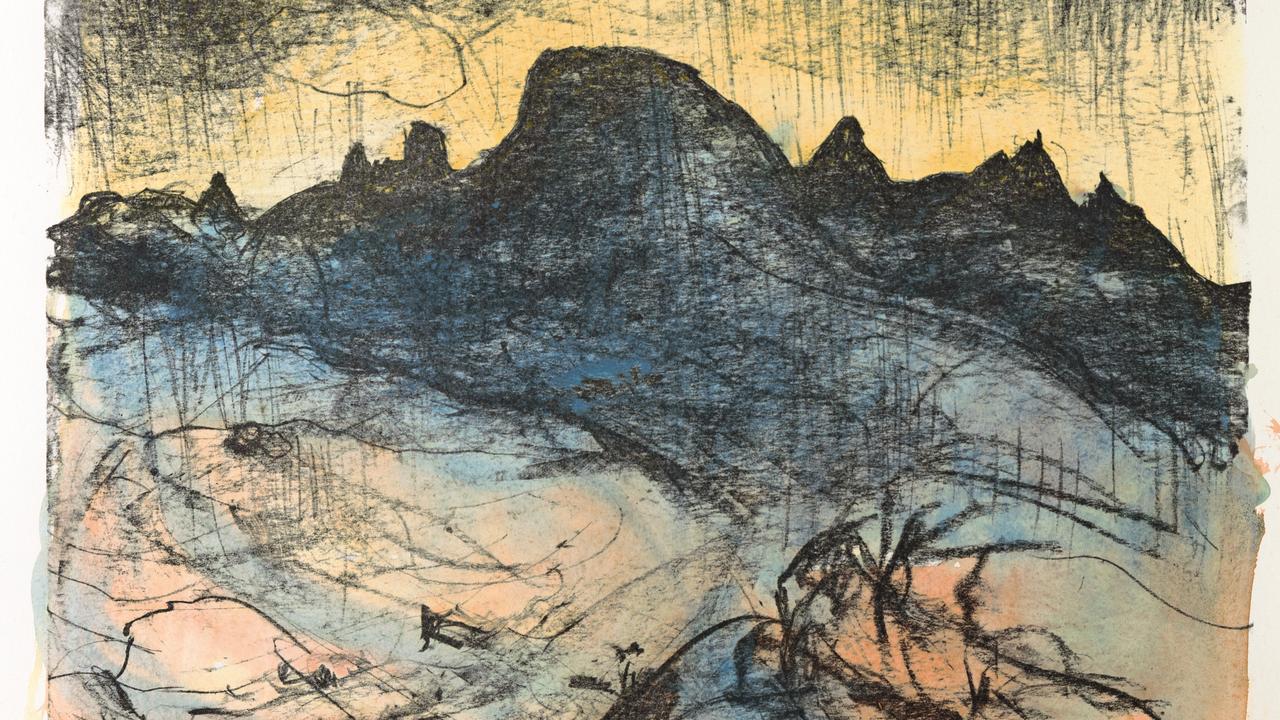Arts funding: show me the money
Tegan Bennett Daylight offers an insider’s view of arts funding in Australia

Late last year I sat on a panel of peer assessors for the Australia Council for the Arts, the federal government’s art funding body. Assessors are drawn from a pool of practitioners in particular art forms: in our case, our art is literature, and we were poets, playwrights, fiction writers, editors.
Our job was to read about 140 submissions from writers about a project they were planning, and choose which ones to fund. For the record, from our limited pool of money, we were able to fund 20 of these — about 14.5 per cent.
I’ve been the recipient of Australia Council funding myself, as well as the recipient of some aghast reactions to the ‘‘huge’’ sums artists are paid for their work. Years ago a friend, hearing about my latest application, began an outraged sentence thus: ‘‘As a taxpayer …’’
I’m sorry to say that I just ducked my head and let that particular wave crash over me. What I’d like to say now, head above water, is that I am a taxpayer too. My last Australia Council grant was for $50,000, over two years, on which I paid about $12,000 tax. This left me with about $19,000 a year, money I used to buy out some of my work as a casual tutor at university. In simple terms, it bought me about two days a week to work at writing.
But before last year I’d never really known what went on at the Australia Council meetings. I wrote my own grant applications as honestly and clearly as I could, but I never quite knew what they were looking for, and I saw each success as something akin to a lottery win.
Now, after my experience, I can say that a ‘‘win’’ has nothing to do with a lottery. Each application is carefully — and, yes, lovingly — scrutinised by a team of committed readers and practitioners. I found my experience working with such people so affirming, so ridiculously uplifting, that I can’t help but write about it.
The first part of the process involves being sent a link to all the applicants in your grant period. My task was to comb through them and find any applications from friends, colleagues, acquaintances, enemies. I found several in the first three categories, none in the final; let’s just say I don’t know my enemies’ names! I had to submit these to the administrators, and was immediately removed from assessing duties for those I was too closely connected to.
After this my job was simply to read.
What does a grant application look like? It first consists of a project description. This project could be a novel, a suite of poems, a journal, a special application from a small publisher to produce a series of books, or an application for a group of writers to travel to a festival to present their work.
For this, the artist or artists needs to know the value of their work, both to their own practice and to an audience. They need to show progression in their field through letters of support from fellow writers, publishers, editors. They must include a sample of a previous project and, if possible, of the work to come.
Then they must specify how their grant money will be spent.
This part of the application, the budget, differs widely from application to application. My approach has always been to ask for a sum and call it ‘‘writer’s income’’. I don’t travel or do research for my work; I just stay home and write. Some artists took the same approach.
All journals and organisations are, by necessity, more elaborate in their approach to this; they have to pay several people for a range of different activities. Some individual writers, too, present madly specific budgets, involving travel, interviews, childcare. I think this is partly to do with the anxiety of filling in forms. It takes a certain courage to see seven empty boxes saying ‘‘budget’’ and fill in only one, with one sum.
It feels urgent for me to tell you that there are no cynical applications. Producing art is so difficult and so poorly paid — who would do it for the money? No one is lounging on a pile of treasure tossing off applications so the pile can get higher.
Artists are people who make art because they can’t not, but they need money and time to produce their work. If we invest in them, they invest in us, and the enriching goes in both directions.
It is of course a basic human impulse to create, to make something out of the raw materials of life. In a 2017 essay on cultural value, The Pie Chart of Happiness, Sydney Theatre Company executive director Patrick McIntyre finishes with a quote from Brian Eno: ‘‘You have to eat, for example, but you don’t have to invent Baked Alaska. We have to move, but we don’t have to do the rumba.’’
McIntyre suggests that this impulse, and the results of it — the food, the dance, the book — are true wellsprings of happiness. This is what the Australia Council is funding.
Australia is full of people who have this impulse, to make more of experience than just the experience itself.
There are writers looking at the country around them — at birds, streets, rock formations, waterholes — and being inspired to write a suite of poems, a play, a short story about them.
There are artists who have experienced terrible loss or injustice, who want to tell us about it, for their own sakes, but also to connect to those who might feel alone in their own experience.
An artist might be indigenous, Chinese, Irish, Iraqi, Cambodian in origin: all are Australian, all contributing to the continuing and fascinating story of who we are. Everywhere, history is being recorded and made, day after day, by people who can’t stop themselves generating art in response to the things they see and feel.
Our lives are immeasurably enriched by this. Our artists are not. The average yearly income generated by an Australian writer (from their writing alone) is $12,900, as Macquarie University academic David Throsby recorded in the study The Australian Book Industry: Authors, Publishers and Readers in a Time of Change.
Having read and assessed our 140 applications, it’s time for the meeting.
This takes place over two days in which every single application is considered. All assessors have scored applications before the meeting, and so we work from a screen showing applications in order of their rating.
This is a guide only. Each application, excepting those which simply have not fulfilled enough requirements to be seriously considered, is seriously considered. Each is discussed in depth. Every assessor has their set of tastes, their alliances to a certain art form or a certain style. And every assessor is prepared to fight almost to the death for an application she or he thinks is worth funding.
Our particular group contained practitioners of every kind. One or two of us had met before but mostly we were unknown to each other, and drawn from all over Australia. Still, there are not many Australian writers; we generally knew of each other, or had shared connections.
Probably the most striking common ground was that almost all of us were teachers. Most Australian writers can’t afford to live on writing alone, and teaching, while a brutally contested space in almost every Australian university, is still the obvious money earner for many of us.
In the meeting I sat across from a prominent Australian poet, a spirited, vivid personality, a woman almost comically well-connected in poetry, as a writer of it, a judge, an editor, a critic. She and I disagreed many times. Halfway though the first day we were laughing every time this happened, rolling our eyes at each other. Occasionally we had to make way for other, more cool-headed assessors to make a decision.
Several times, too, we had to leave the room together, as our connections meant we had to recuse ourselves from a certain application. This was not awkward — it was joyful. Laughing, we put our heads together and compared notes, talked about the shape of our working lives, books we loved, books we hated.
I learned, too, a great deal from the indigenous member of our panel, a writer and bookseller, among many other things. Her expertise was twofold: she worked as the rest of us did, selecting applications that appealed to her, that she thought were fundable for reasons of excellence in both art and planning.
But her second job was to notice what went on in each application that involved indigenous content of some kind. Patient, calm and diffident, she made every discussion richer and deeper. She made me understand on a far more visceral level what it might be like to have your story told for you rather than by you, over and over again.
Both these engagements, with two very different Australian writers, altered my way of reading and thinking. Both reminded me that there is always something new to learn.
Perhaps one of the most exciting moments came right towards the end of the meeting. Each assessor was asked to bookmark a few applications they felt passionately about — applications that had not received a high ranking or much attention from the other assessors.
On the screen, the order of projects funded was continually changing, like the arrivals board at an airport. Some went up, some went down, some disappeared altogether. This particular application was brought to our attention by an assessor who suggested that perhaps we had dismissed it too quickly.
Silence in the room as every assessor turned to the laptop in front of them, opened the artist’s work, reviewed every sample, refamiliarised themselves with the artist’s project description. And then the assessor began to speak on the artist’s behalf.
Confidentiality forbids me from relating what he said, but the assessor asked us to look again at page after page of the artist’s work, with each page speaking eloquently on behalf of the artist’s vision, showing us what he felt they intended with their new work. He defended the artist as an important voice in Australian literature.
By the end of this assessor’s speech, the application was funded.
It is an imperfect process. First, there is a limited amount of money. Last financial year, the Australia Council’s total allocation for literature through the grant application process I am describing was $2.6m. By way of comparison, the Australian government has just committed $498m to redeveloping the Australian War Memorial. Put another way, that’s 192 more years of literature funding.
Second, we are, the seven of us, only human. We have our prejudices and our passions. But the Australia Council has three rounds of funding every year, and a new set of assessors for each round.
Artists: try again. Your work is being read and being noticed. You exist.
Readers, consumers of art: your taxes are in good hands. Artists are not rapacious liars, sucking money out of an economy that cannot afford them. They are thoughtful, committed contributors to our national conversation. They remind us who we are; they nudge us towards noticing our weaknesses, open us to new versions of our selves.
Some of them are nutty; not all can construct a sensible proposal. But all are working for the love of this place, of its art and, finally, for the love of you, the audience.
Tegan Bennett Daylight is a writer, teacher and critic. Her most recent book is Six Bedrooms.


